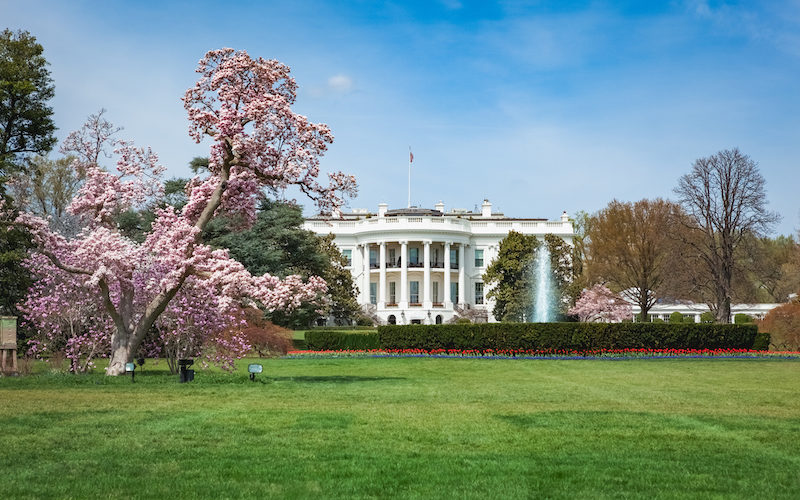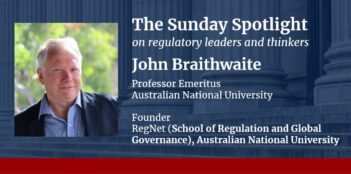
The Administration quietly released data showing its deregulatory success has been limited.
This past December was a busy month for anyone who follows regulation. Although the Trump Administration has publicly touted its deregulatory agenda for the last three years, it had also failed until December to release annual reports required by law on its regulatory track record. When the Administration finally got around to issuing these reports last month, it was surprisingly quiet about their release. Taking a close look at the data highlighted in these reports may explain the Administration’s relative silence.
All total, the Trump Administration released three reports of regulatory data in December. The first one it issued was its third annual “progress report” touting its deregulatory accomplishments, issued to follow the President’s instructions in Executive Order 13771. Then the Office of Management and Budget (OMB) released its legally required annual report to Congress on the costs and benefits of federal regulations issued during the last fiscal year of the Obama Administration. Finally, two days before Christmas, OMB released a single, combined report—designated as a draft, and somewhat abridged too—which purports to catch up on the Administration’s other tardy annual reports, reporting data on regulatory costs and benefits from the end of the Obama Administration and the beginning of the Trump Administration up to the present.
Even if you follow regulatory policy closely, it would not be surprising if you missed the Administration’s release of this trove of data. The Administration lightly publicized its own progress report and did not publicize at all the release of its legally required annual reports on costs and benefits.
The Trump Administration’s two previous deregulatory progress reports, published in 2017 and 2018, had been much more highly publicized and used by the Administration to claim that it had been extremely successful in repealing regulations.
These early claims were greatly exaggerated. In 2017, the report claimed a ratio of 22 rollbacks for every new regulation, but upon close examination it was clear that most of the rollbacks were trivial, or not rollbacks at all and instead were regulatory delays or the cancellation of proposals.
The pattern was repeated in 2018 when the Trump Administration claimed “57 significant deregulatory actions” and a ratio of four deregulatory actions for every regulatory action. Again, a closer look at the claimed accomplishments revealed that only 21 of the 57 deregulatory actions resulted in any meaningful cost savings.
What about this year’s report? The claims themselves are more modest. This year the Trump Administration claims only 1.7 significant deregulatory actions for every significant regulation, with a total of 61 deregulatory actions and 35 regulatory ones.
I looked at the 92 total actions specifically listed in the report. (Although the report says there are 61 deregulatory actions and 35 regulatory actions, it actually only specifies 59 and 33 actions.) I further found that even the report’s more modest claims about deregulation are exaggerated.
Of the 59 deregulatory actions, five were withdrawals of proposed rules and two were proposals themselves, meaning there could be no economic impact associated with their withdrawals as they never had been adopted in the first place. Two other deregulatory actions had negligible cost savings and another nine had no estimate of cost savings at all. One action was not a regulation but a guidance document, and another actually imposed costs albeit lower costs than an alternative that an agency could have selected.
The remainder of the actions do have estimates for the cost savings. Seven have annualized savings of less than $1 million; 12 have savings of between $1 million and $10 million; 13 have savings between $10 and $100 million; and the remaining five all have savings of more than $100 million. Very few of the deregulatory actions have estimates of any foregone benefits—so these cost-savings have to be taken lightly, as they could be counteracted by new costs in the form of lost benefits.
The five actions for which the Administration claimed more than $100 million of savings each deserve further explanation. Two are the subject of current lawsuits, and the Trump Administration’s record in defending its regulatory actions against lawsuits is poor. Another one, the U.S. Department of Education’s Gainful Employment regulation, is a repeal of an Obama Administration regulation that never went into effect because of legal challenges. The final two are regulations reducing medical paperwork.
Turning from these deregulatory actions in the Trump Administration’s progress report to the regulatory actions listed in that same report, three of the regulations had negligible costs, two were transfer regulations having no net societal costs, and one seems to be a guidance document rather than a regulation.
Of the remaining regulatory actions, five actions are expected to have annual costs less than $1 million each; eight have between $1 and $10 million; seven between $10 and $100 million; and seven have costs of more than $100 million. A number of the regulatory actions also contained estimates of benefits.
The ratio of deregulatory actions that have cost-savings estimates to regulatory actions with cost estimates is 1.2-to-1. If one only looks at the actions with an annualized impact of more than $100 million per year, then the ratio is 5-to-7. It may turn out to be lower depending on the outcomes of the legal challenges pending against the deregulatory actions.
All in all, the impact of the deregulatory actions of this Administration is quite likely to be negligible on balance.
Of course, looking only at costs misses a critical part of the economic impact of regulations. To examine both benefits and costs, we need to turn to the legally required annual reports to Congress on the costs and benefits of regulations. The just-released 2017 report—covering regulations issued in 2016, the last full year of the Obama Administration—is actually very similar to all previous reports on this subject. OMB notes that for major regulations with estimates of both benefits and costs, the benefits totaled between $18.4 billion and $36.7 billion, while the costs ranged from $4.4 billion to $6.5 billion (2015 dollars). These positive net benefits are in keeping with previous findings from administrations in both parties that the measured benefits of regulations exceed the measured costs.
The data for regulations issued in fiscal years 2017, 2018, and 2019—during the first three years of the Trump Administration—tell a somewhat but not entirely different story.
The 2017 data, which includes the final months of the Obama Administration, show estimated annual benefits of up to $9.5 billion, with annual costs of up to $3.2 billion (2016 dollars).
The 2018 data show both limited benefits, at most $0.6 billion, and limited costs, of at most $0.3 billion (in 2017 dollars), with another $300 million in cost savings largely from one regulation streamlining the Medicare Advantage and Medicare Prescription Drug Benefit programs.
The 2019 data show $0.2 billion to $3.7 billion in benefits and up to $0.6 billion in costs (2018 dollars). Consistent with the data on the administration’s latest “progress” report, the data also show a net cost for regulations that just report cost data.
What do I make of all of these data?
Well, they are largely consistent with what scholars have been saying about the Trump Administration’s regulatory policy. The successes in deregulation have been few and far between.
Where the Trump Administration has differed from its predecessors is in the slower pace of issuing new regulations. But that slowdown, combined with the limited cost savings of the Administration’s deregulatory efforts, has meant that the gap between the economic benefits of regulations and their costs is narrower than in any previous administration. Perhaps that is why the Administration did not want to publicize the release of these data.




